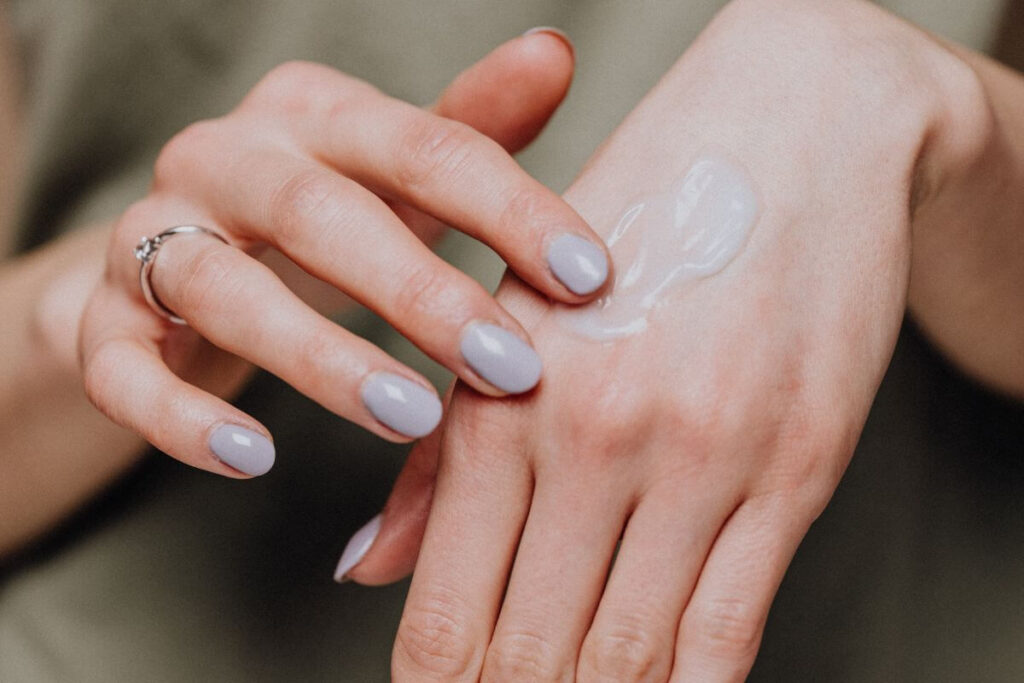An ice bath, the practice of immersing oneself in icy water, has gained popularity for its potential health benefits. Whether you’re an athlete recovering from an intense workout or seeking the invigorating chill, maintaining clean and sanitary ice bath water is essential. Clean water not only enhances the experience but also ensures your health and safety. In this guide, we’ll explore the techniques to keep ice bath water clear and pristine.
The Benefits of Ice Baths
Ice baths, also known as cold water immersion, have been praised for their potential benefits, including:
1. Reduced Muscle Inflammation:
The cold temperature can help reduce muscle inflammation and soreness, aiding in post-exercise recovery.
2. Enhanced Circulation:
Immersion in cold water can stimulate blood circulation, potentially boosting your cardiovascular health.
3. Mental Alertness:
The shock of cold water can increase alertness and energy, making ice baths a popular choice for athletes.
Maintaining Clean Ice Bath Water
Clean water is paramount for a safe and effective ice bath. Here’s how to achieve it:
1. Start with Clean Containers:
Use clean, food-grade containers or tubs to hold the water. Ensure that the containers are regularly sanitized to prevent bacterial growth.
2. Filter Your Water:
If using tap water, consider using a water filter to remove impurities and contaminants. Clean, filtered water provides a more pleasant ice bath experience.
3. Sanitize Your Container:
Before filling it with water, sanitize the container with a mixture of water and a mild detergent. Rinse thoroughly to remove any residue.
4. Monitor Temperature:
To maintain water quality, keep the ice bath water temperature at around 50°F (10°C). This temperature discourages bacteria growth and keeps the water fresh.
5. Limited Use:
If you’re using the ice bath for multiple people, limit the number of users to minimize contamination. This helps maintain water quality.
6. Use Ice Packs:
Using pre-made ice packs can be a cleaner alternative to ice cubes. Ice packs are sealed and less likely to introduce contaminants.
7. Stay Clean:
Ensure that users are clean before entering the ice bath. Remove any lotions, oils, or sweat that may introduce impurities into the water.
8. Regular Water Changes:
After each use or when the water appears cloudy or discolored, change the water. This helps eliminate contaminants and keeps the water fresh.
9. Keep It Covered:
Cover the ice bath when not in use to prevent debris, insects, or dust from entering the water.
Health and Safety Considerations
While maintaining clean ice bath water is essential, it’s equally crucial to prioritize health and safety:
1. Limit Duration:
Avoid prolonged exposure to cold water, especially if you’re new to ice baths. Limit your sessions to 10-15 minutes to prevent adverse effects.
2. Seek Medical Advice:
If you have underlying medical conditions, consult a healthcare professional before starting ice bath therapy.
3. Gradual Adaptation:
If you’re new to ice baths, gradually increase exposure time to allow your body to adapt to the cold.
4. Stay Hydrated:
Ensure you’re adequately hydrated before and after an ice bath to support your body’s thermoregulation.

5. Observe Your Body:
Pay attention to how your body reacts during an ice bath. If you experience severe discomfort or unusual symptoms, exit the bath immediately.
Conclusion
Ice baths can offer numerous benefits, but to fully enjoy these advantages, you must maintain clean and sanitary water. Following the guidelines mentioned above will ensure that your ice bath experience is not only refreshing but also safe and beneficial for your health and well-being.
A Refreshing and Revitalizing Experience
Incorporating ice baths into your routine can be a refreshing and revitalizing experience when done with cleanliness and care. By maintaining clean water and adhering to health and safety guidelines, you can maximize the benefits while minimizing any potential risks. Here are a few additional tips to ensure your ice bath sessions are both invigorating and safe:
1. Gradual Progression:
If you’re new to ice baths, start with shorter durations and gradually increase the time as your body becomes accustomed to the cold. Listen to your body and don’t push yourself too hard.
2. Dress Appropriately:
Wear comfortable and appropriate clothing for your ice bath sessions. A swimsuit or workout gear is ideal. Avoid heavy clothing that can weigh you down.
3. Deep Breathing:
Practice deep and controlled breathing while in the ice bath. This can help you stay calm, manage the shock of cold water, and regulate your body’s response to the cold.
4. Exit Gracefully:
When you’re ready to exit the ice bath, do so gradually. Avoid standing up too quickly, as sudden changes in body position can lead to dizziness or fainting.
5. Warm-Up:
After an ice bath, warm up your body with gentle exercises or by wrapping yourself in a warm blanket. This helps your body regain its normal temperature.
6. Listen to Your Body:
Pay attention to how your body responds during and after the ice bath. Everyone’s tolerance to cold varies, so it’s important to respect your body’s signals.
7. Consult a Professional:
If you have specific health concerns or medical conditions, it’s advisable to consult a healthcare professional before incorporating ice baths into your routine.
8. Hydrate and Nourish:
Rehydrate and nourish your body after an ice bath. Drinking warm liquids, such as herbal tea, and consuming a balanced meal can aid in recovery.
In conclusion, ice baths can be an effective and invigorating practice when done with cleanliness and attention to health and safety. The crisp chill of the water can rejuvenate your body and mind, but it’s essential to approach this practice with care and respect for your own limits. As you make ice baths a part of your wellness routine, remember that the key to a successful experience is to keep the water clean and follow sensible guidelines for safety and health.
Exploring the Benefits of Cold Water Immersion
Cold water immersion, commonly experienced through practices like ice baths, can offer various benefits beyond the initial shock of the cold. Understanding these advantages can help you appreciate the practice and motivate you to incorporate it into your routine.
1. Muscle Recovery:
Cold water immersion is known for its potential to alleviate muscle soreness and inflammation. It can promote faster recovery after intense workouts or sports activities.
2. Enhanced Circulation:
The cold temperature encourages blood vessels to constrict and then expand when you warm up. This process can improve circulation, potentially benefiting your cardiovascular health.
3. Mental Clarity:
The invigorating effect of cold water can enhance mental alertness, reduce stress, and boost your mood. Many people find that it provides a mental reset and a sense of rejuvenation.
4. Improved Immune Function:
Exposure to cold water may stimulate the production of certain immune cells, potentially bolstering your body’s defenses against illnesses.
5. Enhanced Focus and Resilience:
The practice of enduring cold water can help build mental toughness, increase your tolerance for discomfort, and enhance your ability to remain focused under stress.
6. Improved Sleep:
Some individuals report improved sleep quality and faster sleep onset after cold water immersion, as it can help relax the body and mind.
7. Calorie Burning:
Cold exposure may stimulate the production of brown fat, which can burn calories to generate heat. This can aid in weight management.
8. Potential Pain Relief:
Cold water immersion may help alleviate pain and discomfort, making it a potential remedy for conditions like headaches or muscle injuries.
9. Reduced Inflammation:
Cold water can reduce inflammation by constricting blood vessels, which may provide relief for individuals with conditions characterized by chronic inflammation.
10. Mood Enhancement:
The shock of cold water and the endorphins released during cold water immersion can elevate mood and reduce feelings of depression and anxiety.
11. Enhanced Skin and Hair:
Cold water can invigorate the skin and hair, potentially improving their health and appearance.
12. Improved Lymphatic System:
Cold water immersion may stimulate the lymphatic system, helping to remove waste products and toxins from the body.
13. Boosted Metabolism:
Some studies suggest that cold exposure can increase metabolic rate, potentially aiding in weight management.
14. Increased Endurance:
Regular cold water exposure may enhance physical endurance by increasing the body’s ability to tolerate cold conditions.
15. Sense of Achievement:
Completing a cold water immersion session can provide a sense of accomplishment and empowerment, boosting self-confidence.
It’s important to note that the benefits of cold water immersion can vary from person to person. Some people may experience these advantages more prominently than others, and individual responses to cold exposure differ. Always prioritize your safety, health, and comfort when exploring this practice, and consult a healthcare professional if you have any concerns or underlying medical conditions.
Incorporating cold water immersion, such as ice baths, into your wellness routine can be a valuable addition. The clean, pristine water ensures that you fully experience the rejuvenating effects of cold exposure, promoting both physical and mental well-being.
FAQs
1. What is cold water immersion?
Cold water immersion is the practice of immersing one’s body in cold water, such as in an ice bath or cold shower, for therapeutic or wellness purposes.
2. What are the benefits of cold water immersion?
Benefits may include muscle recovery, improved circulation, mental alertness, enhanced focus, and potential health benefits like reduced inflammation and improved sleep.
3. Is cold water immersion safe for everyone?
Cold water immersion is generally safe for most healthy individuals. However, people with certain medical conditions or those who are pregnant should consult a healthcare professional before attempting it.
4. How do I prepare for an ice bath?
Prepare by wearing appropriate clothing (such as a swimsuit), having a timer or watch, and having a warm blanket or towel nearby for post-immersion.
5. How long should I stay in an ice bath?
The duration of an ice bath can vary, but starting with 10-15 minutes is a common recommendation. Beginners should gradually increase their time.
6. What’s the ideal water temperature for an ice bath?
The water temperature for an ice bath is typically around 50°F (10°C). It should be cold but not dangerously so.
7. Are there any risks associated with cold water immersion?
Risks may include hypothermia, frostbite, or, for some individuals, adverse reactions. It’s crucial to monitor your body and exit if you experience discomfort.
8. Can I do cold water immersion daily?
While some individuals incorporate cold water immersion into their daily routine, it’s essential to listen to your body and not overdo it. Many people use it 2-3 times a week.
9. How do I warm up after an ice bath?
After an ice bath, warm up gradually with light exercise, warm clothing, and a warm blanket. Avoid hot baths or showers immediately after, as they can be too abrupt of a temperature change.
10. Can I use an ice bath for weight loss?
Cold water immersion may increase calorie burning by stimulating brown fat, but it’s not a reliable or sustainable method for weight loss. It should be part of a holistic approach to health and fitness.
These FAQs provide an overview of cold water immersion and ice baths, including their benefits, safety considerations, and preparation tips. Always prioritize your health and comfort when trying this practice and consult a healthcare professional if you have concerns.




